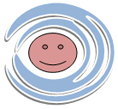Background
Head Shape Deformities
Infants in the NICU often have head shape deformities as a result of their NICU stay. Scaphocepahly, in which the head is disproportionately long and narrow, is most often seen in the NICU because premature babies do not breathe as well on their backs. Therefore, these infants are often positioned either on their side or tummy when in the isolette resulting in a long narrow head shape.
Plagiocephaly, in which one side of the head is flattened and the head appears “oblique” in shape, is also seen to a lesser degree. Plagiocephaly is often a result of the infant having a preferential head turn. It is estimated that up to 85% of infants have a preferential head turn and often the preference is to turn to the right. It is suspected this is due to both caregiving practices and the way the infant is positioned in the womb prior to delivery. The Shape Right System would prevent and/or correct any head shape deformities as a result of the infant’s NICU stay. The statistics are wide ranging but it is estimated that up to 47% of babies have a head shape deformity and nearly 20% of infants born prematurely will have a severe head shape deformity.
Once the child reaches about 6 months old, the bones in the head harden and the head shape deformity can only be corrected with an orthotic helmet. The helmet can cost up to $3,000 dollars and is not always covered by insurance. Along with proper parent education, the Shape Right System would correct or prevent any head shape deformity.
Positioning
The environment of the NICU is quite different from that of the mother’s womb. By replicating the position of the infant in the womb, it is known that the infant experiences less stress and pain while encouraging normal musculoskeletal and neuromotor development.
- The Shape Right System aims to position the baby in flexion, containment, alignment, and comfort while allowing the infant some movement against boundaries.
- The Shape Right System can be used as a total positioning system-just 3 pieces for all of the infant’s positioning needs.
- The Shape Right System can be billed to the patient as a head shaping device, whether it be preventative or corrective.
Calming
The environment of the neonatal intensive care unit (NICU) is structured to save the lives of premature babies. While the strategies used in the NICU are lifesaving and necessary, there are numerous risks infants face because of their NICU stay. Infants in the NICU, even well preemies are at risk of developmental delay, learning disabilities, sensory processing disorders, and feeding aversions. In essence, the brain simply does not develop the same as it would in the comfort of the mother’s womb. Research shows that if we decrease pain and stress in the preterm infant, brain development is improved. Through positioning and facilitation of coping skills, stress and pain are decreased. The Shape Right System will help with positioning and calming of the preterm infant in and out of the isolette.
In the NICU, premature infants are exposed to an array of negative sensory experiences including but not limited to: beeping alarms, daily heel sticks, respiratory support (being on the vent, CPAP, or oxygen), nasogastric tube placement and removal, and caregiving tasks such as diaper changes and blood pressure readings. With stress and pain being two of the primary reasons for poor brain development, calming the infant is critical to a premature infant’s optimal development. In the NICU, facilitation of coping skills and methods of decreasing pain and stress has been well researched and include (but not limited to) the following: Containment holds or firm hands, flexion of the body, infant’s hands placed to his head or mouth, grasping a caregiver’s finger, leg or foot bracing, sucking on a pacifier, use of sucrose on the pacifier during mildly painful procedures.
The beads are manipulated so that the actual weight of the tube is not too heavy on the premature infant’s body. For example, if the infant is less than 1 pound, just the end of the tube or portion of the pillow can be laid on the infant’s back to calm the infant. If the infant, however, is close to 4 pounds, an entire ½ of the tube or full pillow could be placed on the infant to provide comfort and calming.
- The Shape Right System can be used in place of a caregiver’s firm hands and act as a “containment hold”.
- The Shape Right System also allows for leg/foot bracing which is a known method of calming premature infants. With one of the tubes placed in a U-shape directly at and against the infant’s feet, the premature infant has the ability to “kick” or push against the tube. This is both calming to the infant and promotes musculoskeletal development in the legs.
- The Shape Right System can be “scented” which has been shown to help calm premature infants. The Shape Right System can be scented by wearing the tube around the mother’s neck for one hour and placing the “pillow” in her shirt. The second tube would be scented as well in the same manner. Having the mother’s scent in the isolette has been shown to calm premature infants.
- When out of the isolette, the tube or pillow can be placed on the swaddled infant to allow for calming. At home, it could be put in the dryer and placed on the infant’s tummy if the baby is fussy or experiencing painful gas. Again, the Shape Right System is never to be used in the crib at home.
